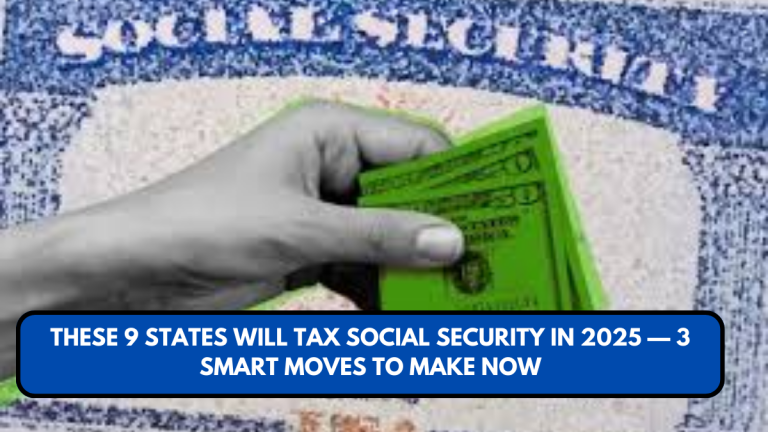
The Social Security Administration (SSA), one of the most critical federal agencies in the United States, is facing a wave of turmoil following major workforce and budget cuts introduced under the Trump administration. As thousands of employees prepare to exit and field offices close across the country, millions of Americans who rely on Social Security benefits may find themselves caught in the crosshairs of bureaucratic slowdown and limited access to services.
Workforce Cuts Spark Alarm
In a sweeping cost-cutting move, the Trump administration recently directed the SSA to reduce its workforce by nearly 7,000 employees, trimming staff from 57,000 to 50,000. This reduction is part of a broader executive order aiming to streamline the federal government by shrinking its civilian workforce.
SSA officials have confirmed that many of these reductions will impact staff directly involved in processing benefit claims and assisting the public, potentially leading to longer wait times, delayed applications, and increased public frustration.
“Customer service is about to get a lot worse,” a senior SSA official told Business Insider, pointing to the shrinking capacity to meet public demand.
Field Office Closures Disrupt In-Person Services

As part of the restructuring, 47 field offices are being shuttered, primarily in Southern and Southeastern states where Social Security dependence tends to be higher. These closures could severely impact vulnerable populations, particularly seniors, low-income Americans, and people with disabilities, who often rely on face-to-face interaction for resolving benefits issues.
The Social Security Administration’s Office Locator still lists thousands of service centers across the U.S., but local media have reported growing frustration among residents in rural areas who now face long travel distances to the nearest open office.
Tighter Verification Rules Compound Challenges
In addition to reduced staffing and office closures, the SSA has implemented stricter identity verification rules requiring more in-person visits—a decision critics argue contradicts the reduced in-person capacity now available.
“They’re making it harder to get help right when they’re cutting the help you can get,” said one San Francisco retiree at a recent protest.
As a result, beneficiaries are left navigating a sluggish system with fewer workers and longer lines, both physical and virtual. Advocates warn that the cumulative impact could lead to missed payments, delayed approvals, and increased financial insecurity for millions.
Public Backlash and Protests
The changes have not gone unnoticed. In San Francisco and other cities, federal workers and union representatives have staged rallies to protest what they call a “power grab” by the administration. According to San Francisco Chronicle, demonstrators expressed concern over both service disruptions and the broader precedent of politicizing essential public services.
“It’s not just about jobs. It’s about making sure Americans get the benefits they’ve earned,” said one protest organizer with the American Federation of Government Employees.
Political Fallout and Privatization Fears
In Washington, Democratic lawmakers have raised concerns about the potential privatization of Social Security, a longstanding fear among progressives. During recent Senate hearings, members grilled Trump’s nominee for SSA Commissioner over their commitment to keeping Social Security publicly administered.
As reported by MarketWatch, some lawmakers worry that weakening the SSA could open the door to profit-driven management of retirement and disability benefits.
Administration Defends Cuts
Despite mounting criticism, the Trump administration insists that the changes are aimed at improving efficiency and cracking down on fraud, not reducing benefits. A White House fact sheet released earlier this month reaffirmed the president’s commitment to preserving Social Security.
“There will be no benefit cuts under this administration,” the document reads. “We are protecting taxpayers by eliminating waste and modernizing operations.”
What Beneficiaries Can Do?

If you are a Social Security recipient or planning to apply, experts recommend taking proactive steps:
- Use SSA’s online portal (ssa.gov) for most services, including benefit estimates, Medicare enrollment, and address changes.
- Make appointments ahead of time to avoid long waits or travel to field offices.
- Stay informed through SSA newsletters and government alerts, especially as policy changes continue to unfold.
For help navigating the process, visit the official SSA Help Center, or contact the SSA via their national toll-free number: 1-800-772-1213.
Conclusion
While the Trump administration defends the Social Security cuts as part of a government-wide reform strategy, the real-world impact is being felt by ordinary Americans who depend on timely access to their benefits. As field offices close and wait times grow, the chaos is no longer theoretical—it’s becoming part of everyday life for millions of seniors and working-class Americans.
Whether the administration will respond to the growing public backlash remains to be seen. For now, the burden lies squarely on the shoulders of those who can least afford it.



